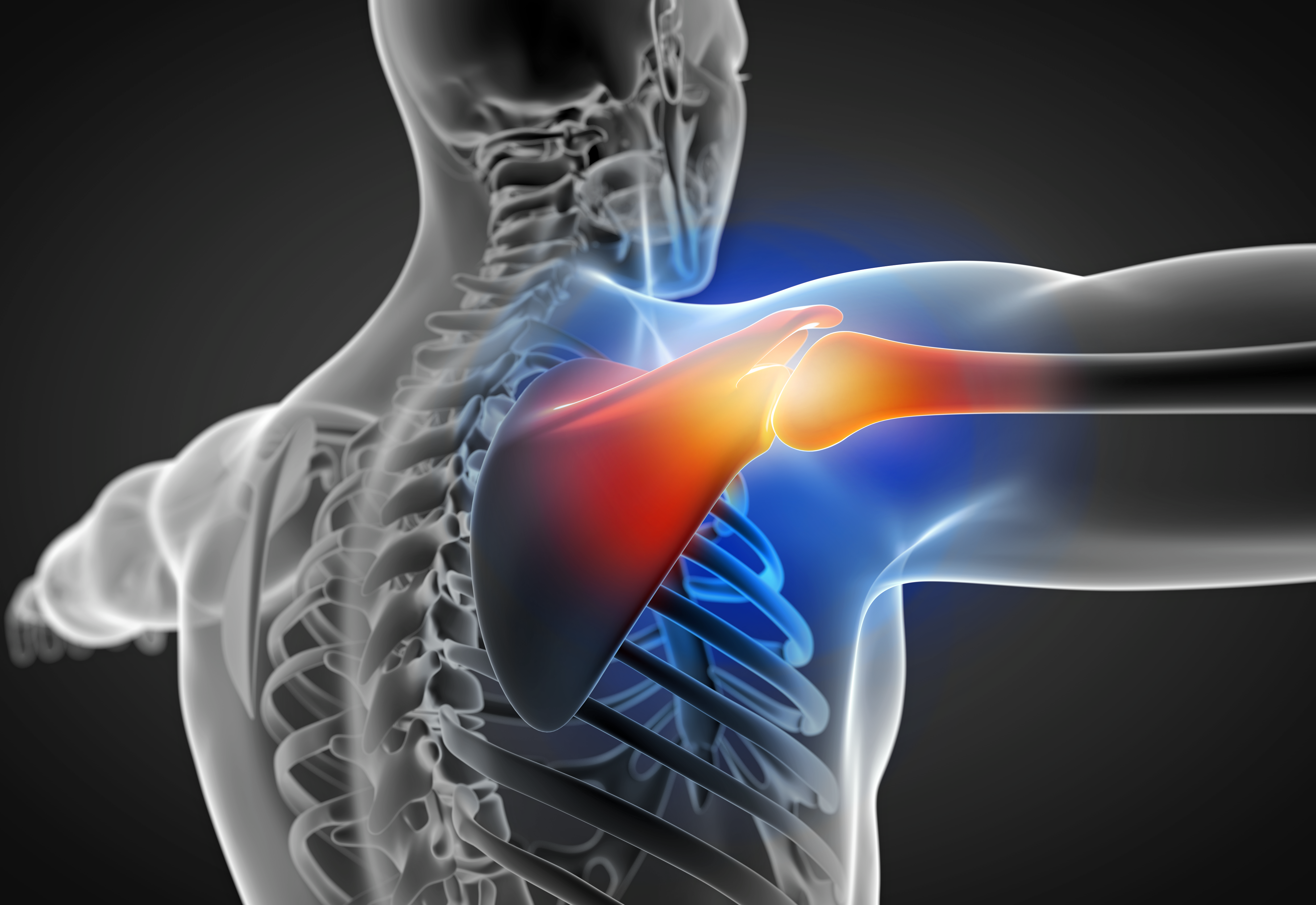Frozen Shoulder
Frozen shoulder, also known as adhesive capsulitis, is a painful condition causing stiffness and limited movement in the shoulder.

FROZEN SHOULDER
Frozen shoulder, also known as adhesive capsulitis, is a painful condition causing stiffness and limited movement in the shoulder. After a period of worsening symptoms, the frozen shoulder tends to get better, although full recovery may take up to 1 to 3 years.
Frozen shoulder is mostly seen in adults between the age of 40 and 60, and occurs in women more often than men. In addition, 10-20% of individuals with diabetes are at an increased risk to develop a frozen shoulder.
How does it occur?
The causes of frozen shoulder are not fully understood. A few factors may put you at more risk for developing a frozen shoulder. Frozen shoulder occurs when the shoulder is not moved for a longer period of time, this might happen after surgery, fracture, or other injuries like rotator cuff injury, or stroke.
Frozen shoulder occurs when the tissues around the shoulder - the shoulder joint capsule become thick, stiff, and, inflamed. The condition is called “frozen” shoulder because the more the pain that is felt, the lesser the shoulder is used. This lack of movement in the shoulder causes the capsule to thicken and become tight, making the shoulder even more difficult to move and thus its “frozen” in its position.
How can you identify it?
Typical symptoms of frozen should include
- Pain is usually dull or aching, typically worse early in the course of the disease.
- Difficulty and pain while lifting one’s arm above the head or extending one’s arm across the body or reaching behind the back.
Symptoms of frozen shoulder are divided into three stages-
- 1.The “freezing” stage- In this stage, the shoulder becomes stiff and is painful to move. The Pain slowly increases. It may worsen at night. Inability to move the shoulder increases. The shoulder loses range of motion. This stage lasts 6 weeks to 9 months.
- 2.The “frozen” stage- In this stage, pain may lessen, but the shoulder remains stiff, making it more difficult to complete daily activities. This stage lasts 2 to 6 months.
- 3.he “thawing” (recovery) stage – In this stage, pain lessens even further, and the ability to move the shoulder improves gradually. Full or near full recovery occurs, and normal strength and motion return. This stage lasts 6 months to 2 years.
How is it assessed by the physiotherapist?
After discussing your symptoms and medical history a physical examination of the arm/shoulder helps in diagnosing the frozen shoulder. A physical examination is conducted by moving the shoulder in all directions by the examiner to check the passive range of motion. The examiner will also watch your active range of shoulder motion. People with Frozen shoulder usually has limitation in both ranges. Other tests such as X-ray, MRI, and Ultrasound help to rule out other causes of stiffness and pain.
What are the various treatment options?
The primary treatment plan for a frozen shoulder is focused on pain management and restoring the shoulder’s range of motion. Treatment for the initial phase involves pain relief and ice pack application over the shoulder for 10 to 15 minutes. Anti-inflammatory medications (Nonsteroidal anti-inflammatory drugs), and painkillers are also used for managing pain. Severe pain and swelling can be managed by steroidal injections. A corticosteroid is injected directly into the shoulder joint. Physical therapy treatment includes strengthening and stretching to improve the shoulder range of motion. If your symptoms are intense or don’t improve over time, other kinds of treatments, such as – manipulation under anesthesia, or shoulder arthroscopy is done.
How can a physiotherapist help you?
Physiotherapy is the cornerstone for the treatment of frozen shoulder, where modalities such as ultrasound, TENS, and IFT are used for managing pain. Dry needling, cupping, and taping are used for release. Stretching, range of motion exercises, and, strengthening exercises can be added further to restore shoulder motion. The course of rehab for a frozen shoulder may be slow and painful, but patience is the key as sometimes it may take up to 6 months for your movement to be completely restored.